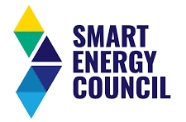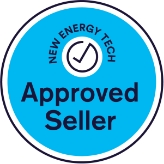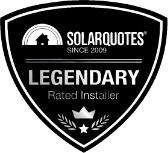 Do I need a 3 phase solar inverter if I have 3 phase power?
Do I need a 3 phase solar inverter if I have 3 phase power?
I often get the phone call, usually from a retired engineer or the like, asking – “I have 3 phase power at home, don’t I need a 3 phase solar inverter?”
Good question – (of course it is, he’s an engineer!) The reason it’s usually asked is because the customer has identified an apparent problem.
This post will first help you identify if you have 3 phase power at your home. Next, we’ll look at the engineer’s question, and discuss why he’s right, but for the wrong reason. We’ll discuss the real reason you should choose a three-phase solar inverter and why you may want to consider 3 phase power when building your new home.
How do I know if I have 3 Phase?
Three-phase power is usually used in larger homes with large ducted airconditioning systems. If you know you have three-phase ducted air-con, you already know you have 3 phase power. There several other obvious ways to tell if you have three-phase power in your home. Some examples are in the images below.
 A 3 Phase Main Switch
A 3 Phase Main Switch
Unless you have a really old main switch, a three phase main switch will look similar to the red switch below. It looks like three smaller switches joined together – because that’s essentially what it is! It is possible to have a three-phase main switch but only two phases.
It’s best to check the lights on the meter or iso-links (below).
3 Phase overhead mains
If you have overhead power, then it should be easy to see a “point of attachment” that looks like this. The overhead “aerial bundle cable” is a bundle of 4 cables. (3 phases and 1 neutral cable). If you have only 2 cables, then you have 1 phase. Very occasionally a home will have 2 phases, but they will likely still have 3 cables connected to the point of attachment as the photo above. So it’s best to check for iso links or lights on the meter.
 A 3 Phase meter
A 3 Phase meter
There are heaps of types of three-phase meters. Generally, they will have “3p4w” meaning “3 phase 4 wire”(the 4th wire is neutral). Again you can have a three-phase meter and 2 phases – but this time there is a telltale sign. Look closer at the display, and you should see L1, L2, L3 displayed.
If you only see L1 and L2, you have 2 phase.
 3 Isolation links
3 Isolation links
Iso links have only been around since about 2011. The purpose of an isolation link is to disconnect the power to the electricity meter in case the meter needs to be changed. If you have iso-links on your switchboard, then the number of iso-links = the number of phases. (The picture shows three isolation links side by side.)
Do I need a 3 Phase inverter?
Back to the engineer’s concerns.
Let’s say I put a single phase solar inverter on my 3 phase home. At lunch time it is producing 4500w of power on “A phase”. At the same time, I am using 4500 watts of power with my air conditioner and pool pump running. The problem is my air conditioner is on “B phase” and “C Phase”. So, my single phase inverter will send all of the power back to the grid on A Phase and I’ll only get the 18 cent feed in for that power. At the same time, we will be buying power in “B Phase” and “C Phase” for 27 cents.
It sounds like the engineer is onto something. Should he install a 3 phase inverter on his 3 phase home? The answer is yes, but not for the reason above.
Polyphase Meters
The Engineer is right in a sense. If you are producing 450ow on “A phase” at any given time, the electrons have to go somewhere. They will not jump across to B and C Phase to feed the air-con and pool. As as far as the electrons are concerned, you will be feeding solar power back to the grid.
But he’s also wrong. You won’t just get the 18 cent feed-in, thanks to Polyphase metering. Electricity companies use digital meters programmed for solar that measure the total of instantaneous import and export. In other words, if you are producing 4000w on A Phase, consuming 2000W on C Phase, and 2000W on C Phase, then the digital meter will read your total import and export to be zero. Your air-con and your power bill won’t know the difference between a 3 phase inverter and a single-phase inverter.
Unless of course, your single phase inverter causes voltage rise issues.

Voltage rise
If your power bill is going to work out the same, why pay extra for a three-phase inverter? It’s to do with power quality, or more specifically voltage rise. Voltage rise is becoming a significant problem with solar systems. It’s in your best interest to reduce the impact of voltage rise in your home. In this post, I explain in detail:
- What voltage rise is. (It’s when your grid voltage rises above the current grid voltage)
- Why voltage rise occurs. (Because everyone is putting solar on their home, and solar contributes to voltage rise.)
- How to calculate voltage rise. (The cheats way is to use a phone app!)
- The problem with voltage rise and. (It makes your inverter turn off and you generate less power.)
- How to minimise it.
The simplest way to minimise voltage rise is on a 3 phase home is to install a 3 phase inverter.

3 Phase for New Build Homes
This is why we recommend installing three-phase if you are building a new home. It won’t cost you much more for the electrician to pull a couple of extra cables to your switchboard while he is doing the wiring, but if done correctly it will minimise the impact of voltage rise, and it will also allow you to install a much bigger solar system.
Oversizing solar

In most places around Australia, having 3 phase power means you can install more solar power. In Qld, if you have single-phase or two-phase power, you can install a 10kW inverter, but the most power you can send back to the grid is 5kW.
If you have 3 phase power to your home, you can install up to a 30kW inverter, and you can export 15kW to the grid. Unless you live in a mega-mansion, this means you are only restricted by your roof size.
But what is the right size solar system for your home? In this post, I explain why there is no such thing as a “just right” or “Goldilocks Solar System“. And why bigger often is better.
In reality, a common system to install on a 3 phase home is 9.9kW of solar with an 8.2kW Fronius inverter.
Conclusion
Do you need a 3 phase inverter if you have 3 phase power? Technically no. A single-phase inverter will work on a 3 phase. This is thanks to the way meters instantaneously calculate grid consumption and solar production as a combination of all three phases. But because of the increasing issue of voltage rise, we always recommend using a 3 phase inverter when you have three-phase power. This will not only help with voltage rise, but it will mean you can install a larger inverter and a bigger solar system.


 A 3 Phase Main Switch
A 3 Phase Main Switch
 A 3 Phase meter
A 3 Phase meter 3 Isolation links
3 Isolation links







2 Responses
Hi Hank. “Three Phase” and “3-string or 3 Input” inverters are different. For what you are talking about, you will need a 3 string inverter. GoodWe make a reputable 3-string inverter, which may be a good option for you. However, I would find a quality installer to design the best system for you as there are many factors that need to be taken into consideration.
Electric meter at my home is single phase. I think I should install a 3-string inverter. I don’t know if the ‘3-string’ I talk of is the same as your ‘3-phase’. I need to know the advantages of a 3-string inverter over a 2-string inverter. My home has very good E&W; facing roof panels & pretty good N-facing panels. All are subjected to some shade during the Winter mornings, primarily the North-facing roof space. I thing I can negate energy production reduction by having one string of panels on each direction. Do you agree? thank you.